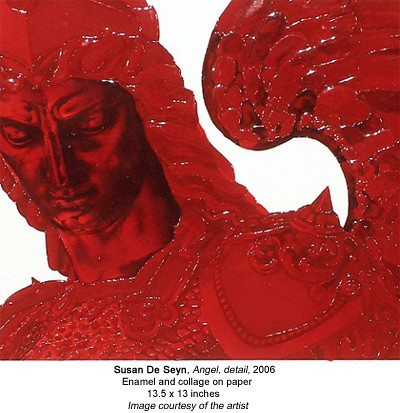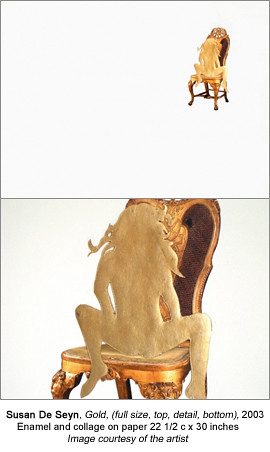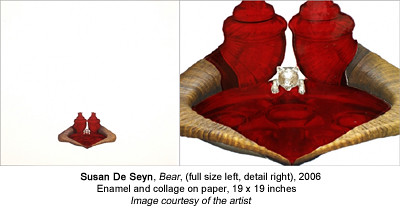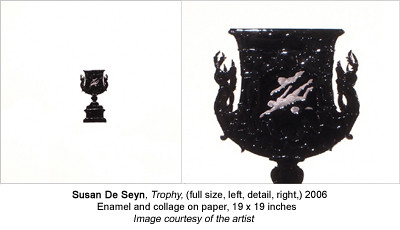
Susan De Seyn
The image above was originally a bronze sculpture that sold sometime over the last three years at a Christies auction. I mention the sale of the object not because we should all rush to our provenance calculator to determine its recontextualized historical value, but merely because the artist uses auction catalogues as the source material for her work.
Susan De Seyn’s drawings consist of culled images primarily from these catalogues which are carefully collaged into the negative space of paper, and then shaped with countless coats of enamel.Building the surface as a sculptor would an object, in many ways these drawings merely pose as two dimensional, since they are about the relationship of the object and body within space.

If the beginning and end of these works were simply that furniture and the body are related, there probably wouldn’t be much to talk about. After all, we make furniture to fit our bodies, so the fact that there is a relationship shouldn’t come as a surprise to anyone. The concern of these drawings however, is more complex, and we know this because the choice of object is so precise. As has been mentioned before in this series, the mark of a good artist is not just the ability to recognize fine forms, but having resourcefulness to seek out innovation from a diversity of sources. There are a lot of reasons why these drawings are so compelling, and, though it sounds old fashioned to say, part of it is simply impeccable taste.

Generally speaking De Seyn is interested in a more esoteric relationship with the body than typically can be discussed without sounding as though you are stretching for meaning. Many people, particularly those who are not steeped in art culture are skeptical of philosophical connections between the art object and the body, so the fact that De Seyn anthroporphizes Bear, turning the candy dish into a giant vagina that is licked by a cub, may not overtly obvious to some. It is unlikely however, that these visual metaphors would go past the original artist however, which is why these works seem in some ways to be made for the maker of the object. I’m not suggesting that these mid 19th century artists would necessarily appreciate such metaphors, (frankly, I’m not sure they would), but I suspect it would not go unnoticed either, that these collages are made with a reverence to the original artist’s skill.

What I find particular compelling about works such as Trophy, is that De Seyn places the object in the direct center of the page, a move that generally risks creating utter compositional boredom. The reason it works is simple: The design of the object itself is strong enough to carry the weight of the paper. It is these kinds of compositional decisions that make the work appear deceptively easy, because creating it in the first place requires not only the visual literacy to understand that the object can hold the page, but the confidence to let it do so.


Comments on this entry are closed.